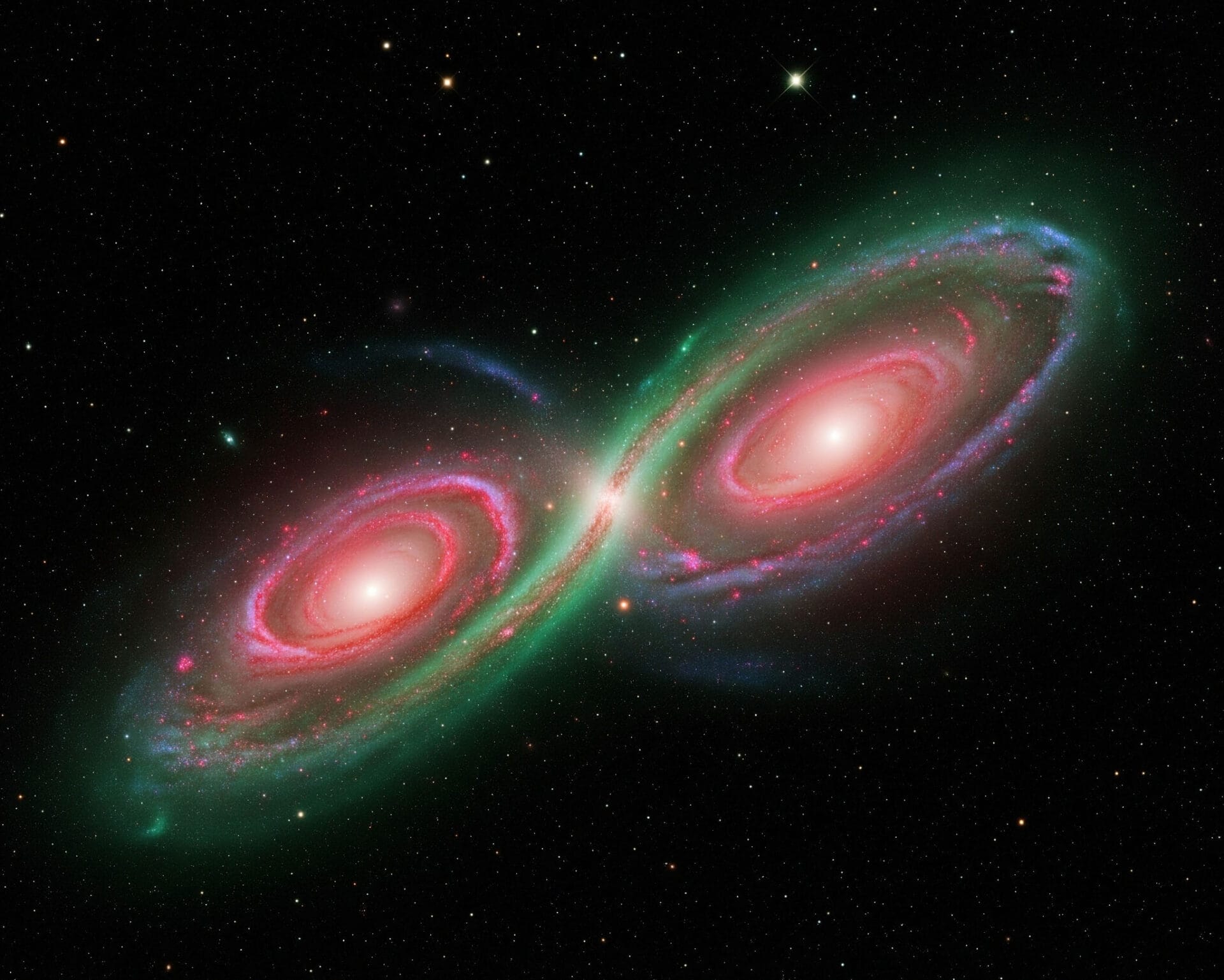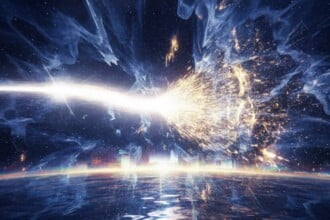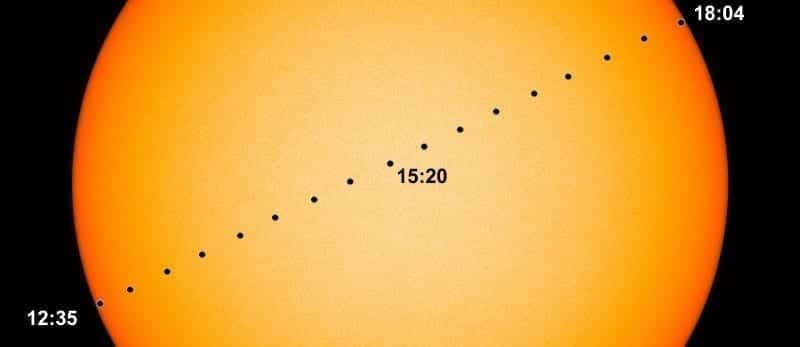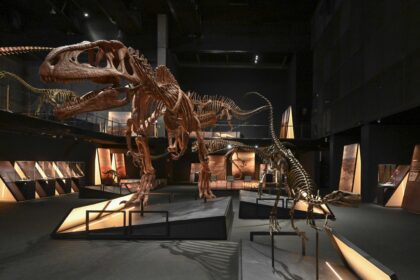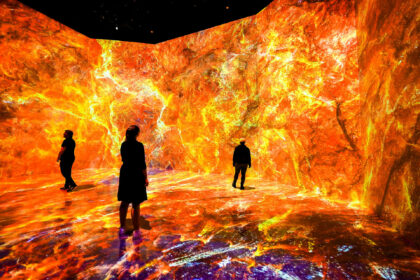The James Webb Space Telescope (JWST) has, in its short tenure, become a relentless engine of cosmological discovery, consistently challenging and refining our understanding of the early universe. Among its most profound contributions has been the systematic identification of “impossibly” massive supermassive black holes (SMBHs) powering brilliant quasars at extreme redshifts, some existing when the cosmos was less than a billion years old. These ancient behemoths, with masses exceeding a billion times that of our Sun, present a formidable theoretical challenge known as the “time crunch”. Standard models of cosmic structure formation, which posit that SMBHs grow gradually from the stellar-mass remnants of the first stars, struggle to account for such rapid growth in the limited time available since the Big Bang. This discrepancy has fueled a long-standing debate over the fundamental mechanisms that seed the universe’s most massive gravitationally-bound objects.
Into this vibrant and contentious landscape has emerged a new and extraordinary protagonist: a visually stunning and scientifically revelatory system nicknamed the “Infinity Galaxy”. Discovered serendipitously by astronomers Pieter van Dokkum of Yale University and Gabriel Brammer of the University of Copenhagen while meticulously examining archival data from JWST’s COSMOS-Web survey, this object has rapidly ascended to the forefront of astrophysical inquiry. Its discovery represents a pivotal moment in the study of SMBH formation, marking a potential transition from the realm of statistical inference and theoretical simulation to that of direct, targeted observation. For years, the debate between the two leading theories—the “light seed” and “heavy seed” models—has been waged indirectly, relying on analyses of whether populations of ancient quasars appear, on average, to be “over-massive” for their host galaxies. The Infinity Galaxy, however, offers a tangible, individual case study—a natural laboratory located at a redshift of z=1.14, where the physical processes of black hole genesis can be dissected in unprecedented detail.
This report asserts that the Infinity Galaxy, with its unique morphology, its powerful off-nucleus SMBH, and its complex kinematic and dynamic environment, provides the most compelling and multi-faceted observational evidence to date for the “direct collapse” or “heavy seed” model of SMBH formation. The research team’s own assessment—that they are potentially “witnessing the birth of a supermassive black hole – something that has never been seen before”—underscores the qualitative leap in evidence this object represents. The analysis of this single, remarkable system moves the scientific question from “Do the conditions for direct collapse exist?” to “Are we watching it happen right now?” As such, the Infinity Galaxy may well be the “smoking gun” that resolves the early quasar conundrum and fundamentally reshapes our understanding of how cosmic giants are born.
Anatomy of a Galactic Collision: The Infinity Galaxy System
The Infinity Galaxy is not a single entity but a complex, interacting system whose story is told through light captured across the entire electromagnetic spectrum. Its striking visual appearance, which inspired its nickname, is that of a figure-eight or the mathematical infinity symbol (∞), a morphology that immediately points to a history of profound gravitational upheaval. A comprehensive portrait of this system, located at R.A. 10:00:14.2, Dec. +02:13:11.7, has been assembled through a coordinated effort utilizing the world’s premier observatories, each providing a crucial piece of the puzzle.
A Multi-Wavelength Portrait
The foundation of the discovery rests on imaging from JWST’s Near-Infrared Camera (NIRCam). These observations reveal the system’s defining features: two massive, compact, and distinctly red galactic nuclei, each encircled by a spectacular stellar ring. The use of multiple NIRCam filters, such as F090W (blue), F115W and F150W (green), and F200W (red), allowed astronomers to differentiate the aged stellar populations within the nuclei and rings from a distinct, glowing swath of ionized gas situated between them. Complementary archival data from the Hubble Space Telescope corroborated the stellar nature of the rings, confirming they are not mere artifacts of dust extinction.
Crucial follow-up spectroscopy was conducted using the Low-Resolution Imaging Spectrometer (LRIS) at the W. M. Keck Observatory. These observations were instrumental in establishing the system’s fundamental parameters. The Keck spectra yielded a definitive redshift of z=1.14, placing the Infinity Galaxy at a lookback time of approximately 8.3 billion years. This measurement provided the first hints about the mass of the central object and its unusual location relative to the two galactic nuclei.
To probe the most energetic processes at play, astronomers turned to high-energy observatories. Data from NASA’s Chandra X-ray Observatory unambiguously detected a powerful source of X-ray emission emanating from the region between the nuclei. Such high-energy radiation is a hallmark of an Active Galactic Nucleus (AGN), where gas is superheated to millions of degrees as it spirals into an accreting SMBH. This was confirmed by radio observations from the Karl G. Jansky Very Large Array (VLA), which detected a compact, powerful radio source characteristic of an AGN. One of the most compelling pieces of initial evidence was the perfect spatial alignment of this VLA radio pinpoint with the center of the ionized gas cloud imaged by JWST, strongly suggesting a physical association.
Physical Parameters and Collision Dynamics
Synthesizing this multi-wavelength data, a detailed physical model of the Infinity Galaxy has emerged. The system is the result of a rare, high-speed, and nearly head-on collision between two massive disk galaxies. The two nuclei, which are the dense central bulges of the original galaxies, are exceptionally massive, with stellar masses estimated at approximately 80 billion and 180 billion solar masses, respectively. They are seen with a projected separation of about 10 kiloparsecs (kpc).
The unique double-ring morphology is a well-understood, albeit rare, outcome of such a “bullseye” collision. As the two galaxies pass through each other, the gravitational disturbance from each bulge propagates outward through the other’s disk, creating an expanding density wave that sweeps up gas and triggers star formation, resulting in the luminous rings. This process is analogous to the nearby collisional ring system II Hz 4. Based on the separation and relative velocities of the system’s components, astronomers estimate that the cataclysmic collision occurred approximately 50 million years before the moment captured by the telescope’s light—a mere cosmic instant. The convergence of evidence from these independent observatories, summarized in Table 1, paints a robust and consistent picture of a recent, violent galactic merger, setting the stage for the system’s most profound secret.
Table 1: Observational Properties of the Infinity Galaxy System
| Attribute | Value / Description | Source(s) |
| Object Nickname | Infinity Galaxy | |
| Position (J2000) | R.A. 10:00:14.2, Dec. +02:13:11.7 | |
| Redshift (z) | 1.14 | |
| Lookback Time | ~8.3 billion years | |
| Morphology | Double collisional ring galaxy; figure-eight (∞) shape | |
| Component Nuclei Stellar Masses | ~1011M☉ (specifically ~8×1010M☉ and ~1.8×1011M☉) | |
| Projected Nuclear Separation | 10 kpc | |
| Central SMBH Mass | ~1 million M☉ | |
| Key Observational Signatures | Active accretion (Chandra X-rays, VLA radio), extended ionized gas cloud (JWST NIRCam/NIRSpec) | |
| Collision Timescale | Occurred ~50 million years prior to observation |
The Central Anomaly: An Off-Nucleus Supermassive Black Hole
The most startling and scientifically consequential feature of the Infinity Galaxy is not its shape, but the location of its central engine. While SMBHs are the defining feature of galactic nuclei, the million-solar-mass black hole in this system is not situated within the gravitational potential well of either of the two massive stellar bulges. Instead, it resides in the cosmic “no-man’s land” between them. This discovery, repeatedly emphasized by lead researcher Pieter van Dokkum as “the biggest surprise of all,” immediately defied conventional expectations. The SMBH is embedded within a vast, turbulent cloud of ionized gas, which glows brightly in JWST’s infrared images, appearing as a greenish haze between the two yellow nuclei.
This is not a dormant relic but a furiously active powerhouse. The quasar-like luminosity detected in both radio waves by the VLA and high-energy X-rays by Chandra—with an X-ray luminosity (LX) reaching approximately 1.5×1044 ergs per second—confirms that the black hole is an AGN, greedily accreting matter from its gaseous cocoon at a prodigious rate. The gas itself, identified as hydrogen stripped of its electrons, is being photo-ionized by the intense ultraviolet and X-ray radiation pouring from the black hole’s accretion disk.
The combination of its location and its recent formation (estimated to be within the 50 million years since the collision) led the research team to a revolutionary conclusion. “It likely didn’t just arrive there, but instead it formed there. And pretty recently,” van Dokkum explains. “In other words, we think we’re witnessing the birth of a supermassive black hole”. This is fundamentally different from observing the ancient, fully-formed quasars that populate the early universe. Here, the evidence points to a formation event caught in the act, in a much more recent cosmic epoch.
The significance of this finding is amplified when considering the precise kinematics of the system. The term “off-nuclear” is an understatement; the SMBH is not randomly displaced. It is both spatially and kinematically centered on the collision interface itself. This transforms the object from a mere curiosity into a piece of forensic evidence. Much like how the gas in the famous Bullet Cluster was shocked and stripped away from the dark matter halos during a collision of galaxy clusters, the gas in the Infinity Galaxy appears to have been compressed into a dense, turbulent remnant at the point of impact. The presence of a newborn SMBH at the heart of this remnant strongly implies a causal link. The black hole is not an interloper that wandered into the fray; it appears to be a direct product of the unique physical environment created by the collision.
A Tale of Two Seeds: Prevailing Models of SMBH Formation
The discovery of the Infinity Galaxy lands squarely in the middle of a decades-long debate about the origins of SMBHs. Two primary theoretical frameworks, known as the “light seed” and “heavy seed” models, offer competing explanations for how these cosmic titans come into being. The evidence from the Infinity Galaxy has profound implications for the viability of each.
The ‘Light Seed’ Model (Stellar Origins)
The more traditional, bottom-up paradigm for SMBH formation is the “light seed” model. This scenario posits that the first black holes were relatively modest objects, with masses ranging from tens to perhaps a thousand solar masses (M☉). These “light seeds” are the natural remnants of the first generation of stars, known as Population III stars, which are thought to have been extremely massive and short-lived, ending their lives in core-collapse supernovae.
According to this model, these initial seeds, scattered throughout the dense environments of early galaxies, would then grow over cosmic time through two primary mechanisms: the hierarchical merging with other black holes during galaxy mergers, and the steady, continuous accretion of interstellar gas. While this process is conceptually straightforward, its primary antagonist is time. Growing a seed of 100 M☉ to a billion M☉ is a slow, arduous process that requires a sustained, near-maximal rate of accretion for nearly a billion years—a set of “exquisite convergence of optimal growth conditions” that are difficult to maintain. The persistent discovery by JWST of billion-solar-mass quasars existing just a few hundred million years after the Big Bang creates the severe “time crunch” that puts this model under immense strain. While some have argued that observational biases may play a role, with JWST preferentially detecting the brightest and most massive black holes and potentially missing a larger population of smaller ones, this selection effect does not fully resolve the challenge posed by the most extreme examples of early SMBHs.
The ‘Heavy Seed’ Model (Direct Collapse)
The alternative, top-down scenario is the “heavy seed” model, which proposes that some black holes are born massive. In this model, initial seeds can have masses ranging from 10,000 to as much as 1,000,000 M☉. These “heavy seeds” are not formed from stars. Instead, they are thought to arise from the “direct collapse” of a vast, dense cloud of gas that becomes gravitationally unstable and implodes under its own weight, bypassing the entire phase of star formation. This process, driven by a general relativistic instability, provides a crucial “head start” for black hole growth, easily explaining the existence of the most massive quasars in the early universe.
The primary theoretical hurdle for the direct collapse model has always been the “star formation problem”. Under normal conditions, as a large gas cloud collapses, it cools and fragments into innumerable smaller, denser clumps, each of which becomes a protostar. For direct collapse to occur, this fragmentation must be suppressed. The canonical model for achieving this requires a very specific and pristine set of conditions thought to exist only in the primordial universe (z>15): the gas must be almost entirely free of metals (elements heavier than hydrogen and helium), and it must be bathed in an intense background of Lyman-Werner ultraviolet photons. This radiation field would destroy molecular hydrogen (H₂), which is an extremely efficient coolant that promotes fragmentation. Without H₂ cooling, the gas cloud remains too hot to fragment and can collapse monolithically. The perceived rarity of these conditions has led to the assumption that direct collapse, while theoretically possible, was an exceptionally rare event confined to the cosmic dawn. The Infinity Galaxy, as will be explored, presents a radical challenge to this assumption.
Table 2: A Comparative Analysis of Supermassive Black Hole Seeding Models
| Attribute | ‘Light Seed’ Model | ‘Heavy Seed’ (Direct Collapse) Model |
| Seed Origin | Remnants of massive Population III stars | Runaway collapse of a massive gas/dust cloud |
| Initial Seed Mass | ~10−1,000M☉ | ~10,000−1,000,000M☉ |
| Formation Process | Core-collapse supernova | General relativistic instability in a gas cloud |
| Growth Mechanism | Hierarchical mergers & gas accretion | Primarily gas accretion onto an already-massive seed |
| Timescale | Slow, >1 billion years to reach SMBH status | Rapid, provides a significant “head start” |
| Primary Challenge | The “Time Crunch”: Explaining early, massive quasars | The “Star Formation Problem”: Preventing fragmentation of the gas cloud |
| Required Environment | Dense stellar clusters in early halos | Pristine, metal-poor gas with strong Lyman-Werner radiation (traditional view) |
The “Smoking Gun”: Evidence for Direct Collapse in the Infinity Galaxy
The case for the Infinity Galaxy being a site of direct collapse is built upon a chain of mutually reinforcing evidence that systematically addresses the core challenges of the heavy seed model while simultaneously ruling out the most plausible alternative explanations. The discovery not only provides a candidate object but also proposes a novel mechanism for its formation, one driven by dynamics rather than primordial chemistry.
The Collision-Induced Birth Cloud
The key insight offered by the Infinity Galaxy is that the extreme conditions required for direct collapse can be generated by the brute-force physics of a galaxy merger, even in the more mature, metal-rich universe. The canonical direct collapse model’s reliance on metal-free gas and a Lyman-Werner radiation field is a way to solve the star formation problem by preventing the gas from cooling efficiently. The Infinity Galaxy, existing at a much later cosmic epoch (z=1.14), involves two massive, evolved galaxies that are certainly not metal-free.
Instead, the research team proposes a new channel for suppressing fragmentation. The head-on, high-speed collision between the two galactic disks would have driven powerful shockwaves through their interstellar gas, compressing it to extreme densities and inducing intense turbulence in the region between the two nuclei. This process is hypothesized to have created a “dense knot” or “gaseous remnant” that became gravitationally unstable. In this highly turbulent environment, the conditions for star formation may have been disrupted, preventing the gas from fragmenting and allowing it to collapse monolithically into a single, massive object—a direct collapse black hole. This provides a compelling physical solution to the “star formation problem” that is applicable outside the narrow confines of the primordial universe. It suggests that direct collapse is not just a chemical process tied to a specific era, but a dynamical process that can be triggered by violent events throughout cosmic history.
The Kinematic Verdict – The Follow-up Paper
While the collision scenario provided a plausible narrative, the definitive evidence required a kinematic test. This was the primary goal of the follow-up observations detailed in the second paper by van Dokkum and collaborators (submitted to The Astrophysical Journal Letters as arXiv:2506.15619), which utilized the powerful capabilities of JWST’s Near-Infrared Spectrograph (NIRSpec) in its Integral Field Unit (IFU) mode.
The NIRSpec IFU allowed the team to create a detailed two-dimensional map of the motion of the ionized gas cloud. By measuring the Doppler shift of emission lines across the cloud, they could determine its internal velocity structure. Simultaneously, the broad emission lines from the AGN itself, originating from gas swirling in the immediate vicinity of the black hole, provided a measure of the SMBH’s bulk radial velocity. The central test was to compare these two velocities.
The result was unambiguous and profound. The SMBH’s velocity was found to be “beautifully in the middle of the velocity distribution of this surrounding gas,” matching it to within approximately 50 km/s. This kinematic lock-step, described by the team as the “key result that we were after,” is the strongest possible evidence that the SMBH formed in situ from the very gas cloud it now illuminates. It is, in essence, the cloud’s offspring, born from its collapse and at rest with respect to its parent.
Systematically Ruling Out the Alternatives
This crucial kinematic data provides the leverage needed to dismantle the primary alternative explanations for the SMBH’s unusual location, which the researchers themselves had prudently considered.
- Scenario 1: The Runaway Black Hole. This hypothesis posits that the SMBH was formed elsewhere, perhaps in one of the galactic nuclei, and was subsequently ejected, now merely passing through the central gas cloud. Such an ejection, whether by a gravitational slingshot or recoil from a black hole merger, would be a violent event, imparting a large “natal kick” or peculiar velocity to the black hole. A runaway object traversing the gas cloud would therefore be expected to have a significant velocity difference relative to the gas. The observed match to within ~50 km/s makes this scenario dynamically improbable.
- Scenario 2: The Cloaked Third Galaxy. This scenario suggests the SMBH is not part of the Infinity system at all, but is instead the nucleus of a third, separate galaxy that happens to lie along the same line of sight, its faint stellar light drowned out by the glare of the AGN and the colliding galaxies. This explanation is challenged on multiple fronts. First, a galaxy massive enough to host a million-solar-mass SMBH is unlikely to be a faint dwarf galaxy that would be so easily hidden. More importantly, a chance alignment with a background or foreground galaxy would mean its velocity would be completely uncorrelated with the gas dynamics of the Infinity system at z=1.14. The precise velocity match again argues powerfully against this being a simple coincidence.
An Unexpected Triad: The Final Piece of the Puzzle
The follow-up NIRSpec observations delivered yet another, entirely unexpected discovery that served to cement the case for in-situ formation. As the team analyzed the spectra from the two original galactic nuclei, they found unmistakable evidence that each one also hosts its own active, supermassive black hole. This evidence came in the form of extremely broad Hydrogen-alpha (Hα) emission lines, with a full width at half maximum (FWHM) of approximately 3000 km/s. Such broad lines are a classic, unambiguous signature of gas orbiting at tremendous speeds in the deep gravitational well of a massive central object, confirming the presence of two more AGN in the system.
This “unexpected bonus,” as van Dokkum described it, transformed the system from a binary merger with a newborn black hole into a rare and remarkable triple-active-SMBH system. The Infinity Galaxy contains three confirmed, actively accreting black holes: two very massive, pre-existing ones in the original galactic nuclei, and the newly-formed million-solar-mass object in the middle.
This finding provides the final, decisive refutation of the runaway black hole scenario, particularly any version involving gravitational wave recoil. In a merger of two SMBHs, the emission of gravitational waves can be asymmetric, imparting a powerful kick to the final, merged black hole that can eject it from the galaxy’s core. However, the discovery that both of the original nuclei still contain their resident SMBHs makes it dynamically impossible for the central SMBH to have been ejected from either of them. A nucleus cannot eject its central black hole via recoil and simultaneously retain it.
This convergence of evidence is scientifically powerful. The follow-up observations provided two independent lines of reasoning that both point to the same conclusion. The kinematic evidence (the velocity match) strongly disfavors a runaway scenario, while the dynamical evidence (the presence of the other two SMBHs) makes the most plausible physical mechanism for a runaway (gravitational recoil) impossible. With the primary alternative explanations systematically falsified by observation, the hypothesis that the central black hole was born where it now resides—through the direct collapse of the collision-induced gas cloud—stands as the most compelling and robust explanation.
Broader Implications for Cosmology and Galaxy Evolution
The implications of the Infinity Galaxy discovery extend far beyond this single object, promising to reshape key areas of astrophysics and cosmology. If confirmed, this observation provides not just evidence for a theory, but a new lens through which to view the evolution of galaxies and their central black holes.
The most immediate impact is on the early quasar paradox. The Infinity Galaxy provides a vivid, observable demonstration of a mechanism for forming “heavy seeds” rapidly. A black hole born with a mass of hundreds of thousands to a million solar masses has a tremendous head start, making it far easier to grow to the billion-solar-mass scales observed in the first billion years of cosmic history. This discovery suggests that the universe has a viable “fast track” for SMBH formation, potentially resolving the “time crunch” that has long plagued the light seed model.
Perhaps more profoundly, the discovery suggests that direct collapse is not a phenomenon confined to the unique, pristine conditions of the cosmic dawn. The mechanism at play in the Infinity Galaxy is driven by violent dynamics—a galaxy merger—rather than the specific chemistry of metal-free gas. This implies that nature can make heavy seeds throughout cosmic time, whenever and wherever gas-rich galaxies collide in a sufficiently violent manner. This idea, championed by co-author and heavy seed theorist Priyamvada Natarajan, means that direct collapse may be a more common and persistent feature of the cosmos than previously imagined, contributing to the growth of SMBHs over billions of years.
This finding may also identify a new, albeit short-lived, phase in the lifecycle of galaxy mergers. Our models of galaxy evolution typically focus on starbursts, tidal stripping, and the eventual merger of the pre-existing central black holes. The Infinity Galaxy suggests another possible outcome: the collision itself can act as a black hole factory, triggering the birth of an entirely new SMBH in the turbulent interface between the merging galaxies. This adds a new layer of complexity and a new potential pathway to our simulations of how galaxies and their black hole populations co-evolve.
Finally, this discovery provides a crucial physical context for other enigmatic objects being uncovered by JWST. For instance, the telescope has identified a population of “Little Red Dots” (LRDs), which are thought to be compact, dust-obscured, and rapidly growing SMBHs in the early universe. The Infinity Galaxy offers a tangible, physical model for how such objects might get their start, demonstrating how a massive, obscured seed can be forged in the heart of a chaotic, gas-rich environment.
Conclusion – Future Directions and Unanswered Questions
The confluence of evidence from the Infinity Galaxy presents a powerful, coherent, and compelling narrative for the direct collapse of a gas cloud into a supermassive black hole. The unique morphology, the off-nucleus location of the central AGN, the kinematic lock-step between the black hole and its host gas cloud, and the definitive presence of two other SMBHs in the system’s original nuclei collectively build an formidable case. The primary alternative explanations—a runaway black hole or a chance alignment with a background galaxy—have been systematically weakened or falsified by direct observational evidence.
Yet, in the rigorous spirit of scientific inquiry, the research team maintains a stance of cautious optimism. As Pieter van Dokkum states, “We can’t say definitively that we have found a direct collapse black hole. But we can say that these new data strengthen the case that we’re seeing a newborn black hole, while eliminating some of the competing explanations”. This discovery is not an endpoint but a call to action for the broader astronomical community.
The immediate next step lies in the realm of theory. The “ball is now in the theorists’ court” to develop sophisticated hydrodynamical simulations that can model the specific initial conditions of the Infinity Galaxy’s collision. These simulations will be critical to test whether the proposed mechanism—shock-induced, turbulent compression—can indeed suppress star formation and lead to the runaway gravitational collapse of a million-solar-mass object under the physical conditions observed.
On the observational front, the team has already planned further investigations. Future work will include using the advanced adaptive optics systems on ground-based telescopes like the Keck Observatory to obtain even higher spatial resolution spectra. These observations will aim to probe the gas dynamics in the immediate vicinity of the newborn black hole’s event horizon, providing deeper insights into the accretion process and the structure of its birth cloud.
The Infinity Galaxy has transformed a long-standing theoretical debate into a tangible, observable phenomenon. It stands as a unique natural laboratory, offering an unprecedented opportunity to study the genesis of a supermassive black hole in real time. While questions remain and further confirmation is required, this remarkable system has opened a new chapter in astrophysics, promising to unlock one of the most fundamental secrets of the cosmos: the origin of its greatest giants.
